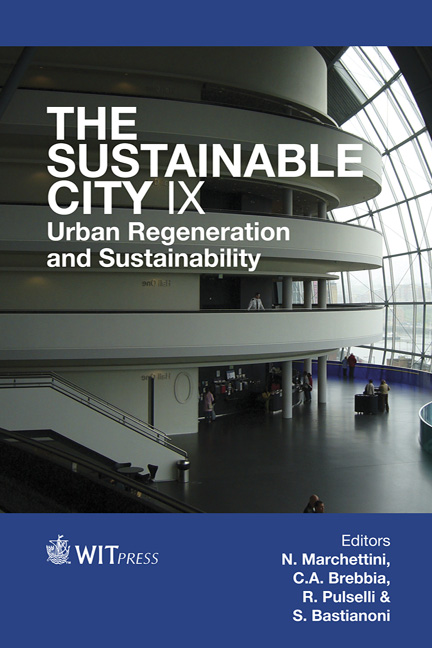Urban Dimensions For Neighborhoods With Higher Environmental Value
Price
Free (open access)
Transaction
Volume
191
Pages
12
Page Range
415 - 426
Published
2014
Size
1,856 kb
Paper DOI
10.2495/SC140351
Copyright
WIT Press
Author(s)
K. Conde, S. Pina
Abstract
The quality of the urban residential environment is closely related to the quality of life, and how people perceive their surroundings. From observations some neighbourhoods make concerning the use of their urban spaces over the years, the authors hypothesize that a set of urban elements could provide and maintain urban environmental quality, whose value added is perceived by the community assessing their urban dimensions. The objective of this research is to identify the urban dimensions to which higher environmental value is attributed. This paper presents the results of an exploratory study with the development of a case study, in which a neighbourhood in the city of Vitoria ES, Brazil, is assessed. Designed in 1952, the layout of the neighbourhood remained basically unchanged, and despite the population growth and changes in the urban landscape, such urban spaces have preserved their use throughout decades. Sources of documentary evidence and interviews with residents are used to characterize the residential district. Applying the Stated Preference Method, using 24 picture cards representing value attributes of urban design in socio-cultural, environmental, economic, and human interaction contexts at city and neighbourhood levels the perceived environmental value was assessed. Safety is the most desired attribute for the residents interviewed, followed by: mobility, diversity of shops and services. Except for safety, all the other attributes are perceived as value added in the neighbourhood where they live. Thus, the neighbourhood studied is considered a full housing territory bringing value to the residents and significantly contributing to the quality of urban life.
Keywords
urban environmental value, urban design, quality of the urban life, urban environment perception





